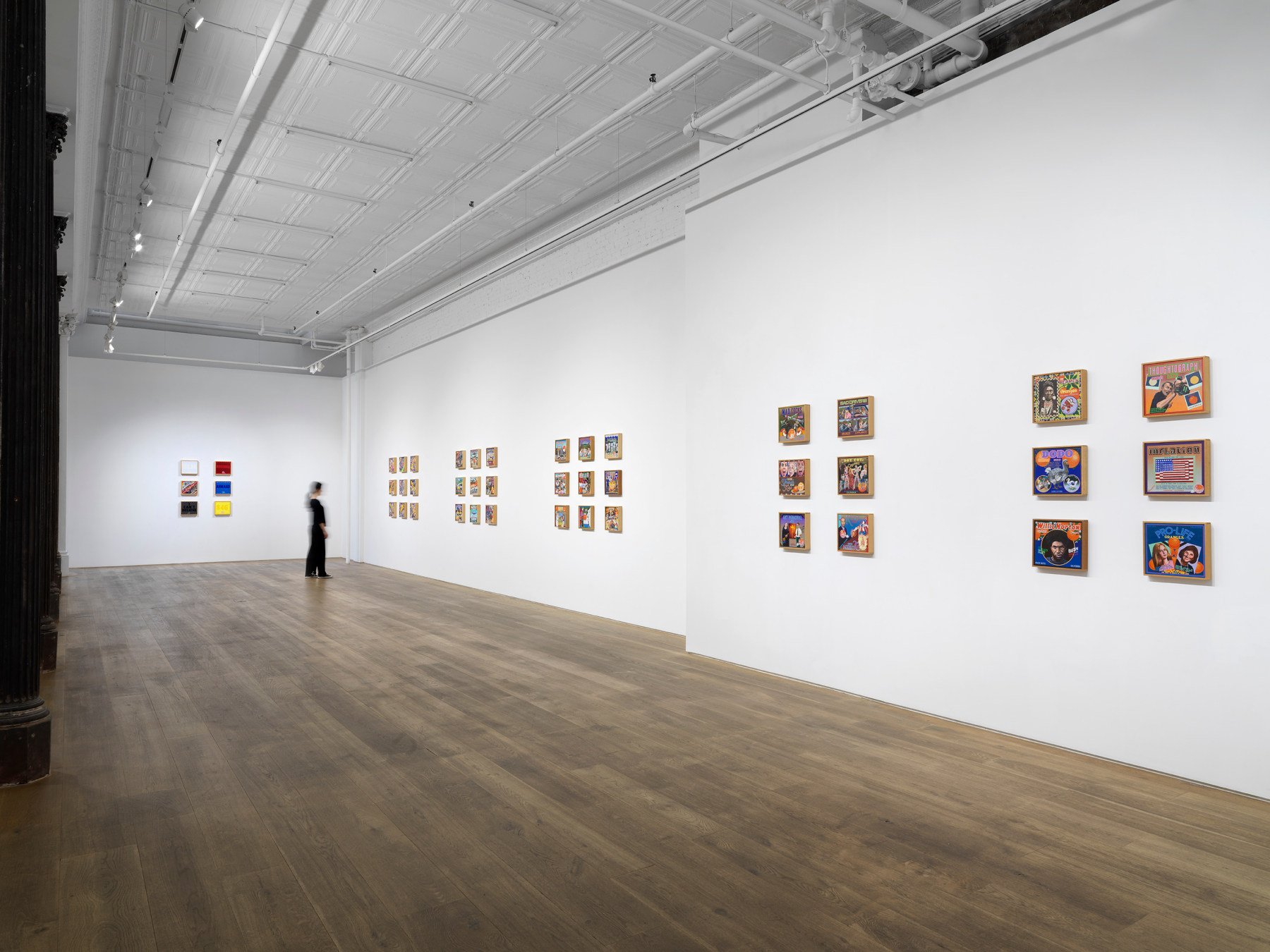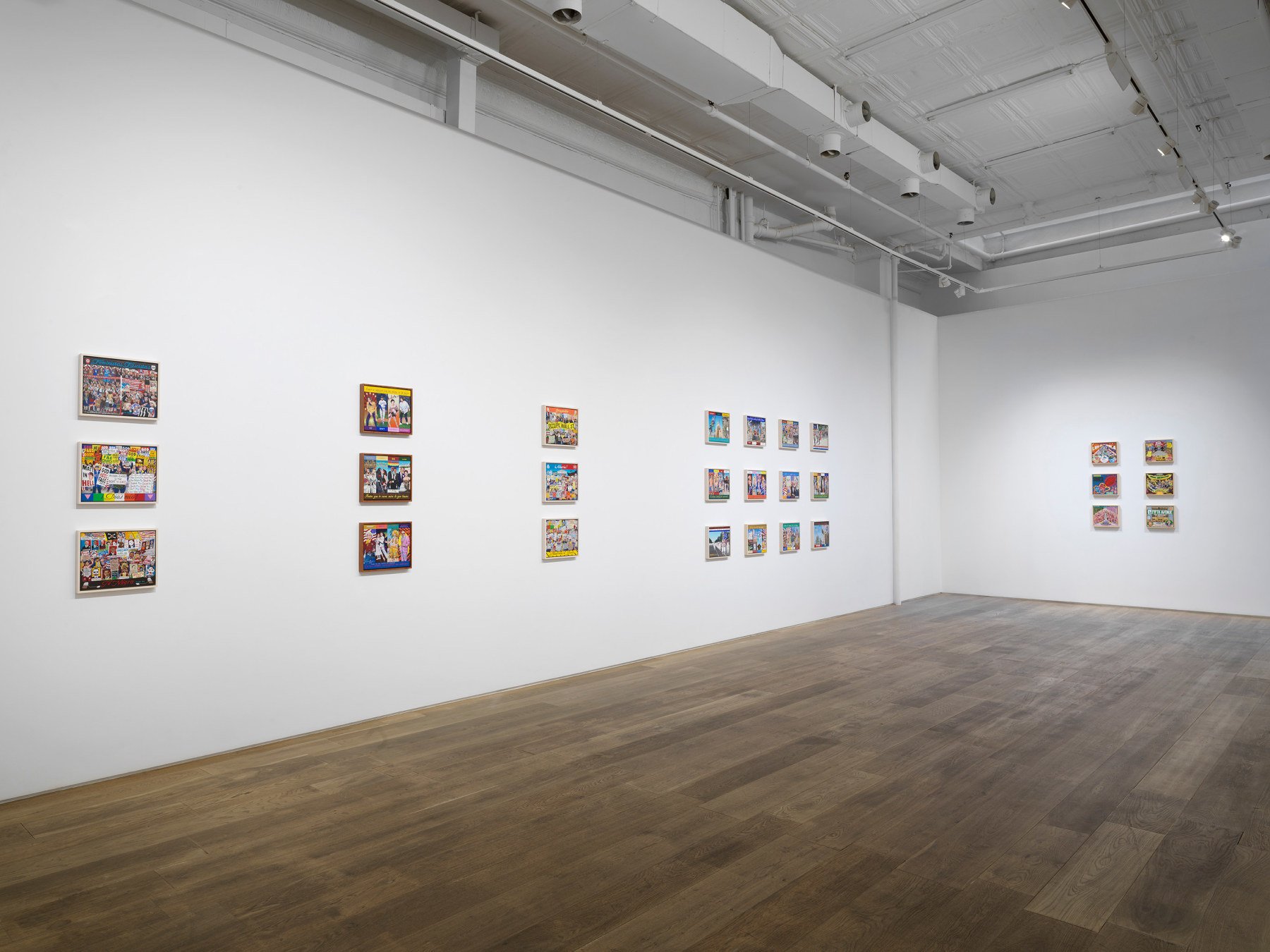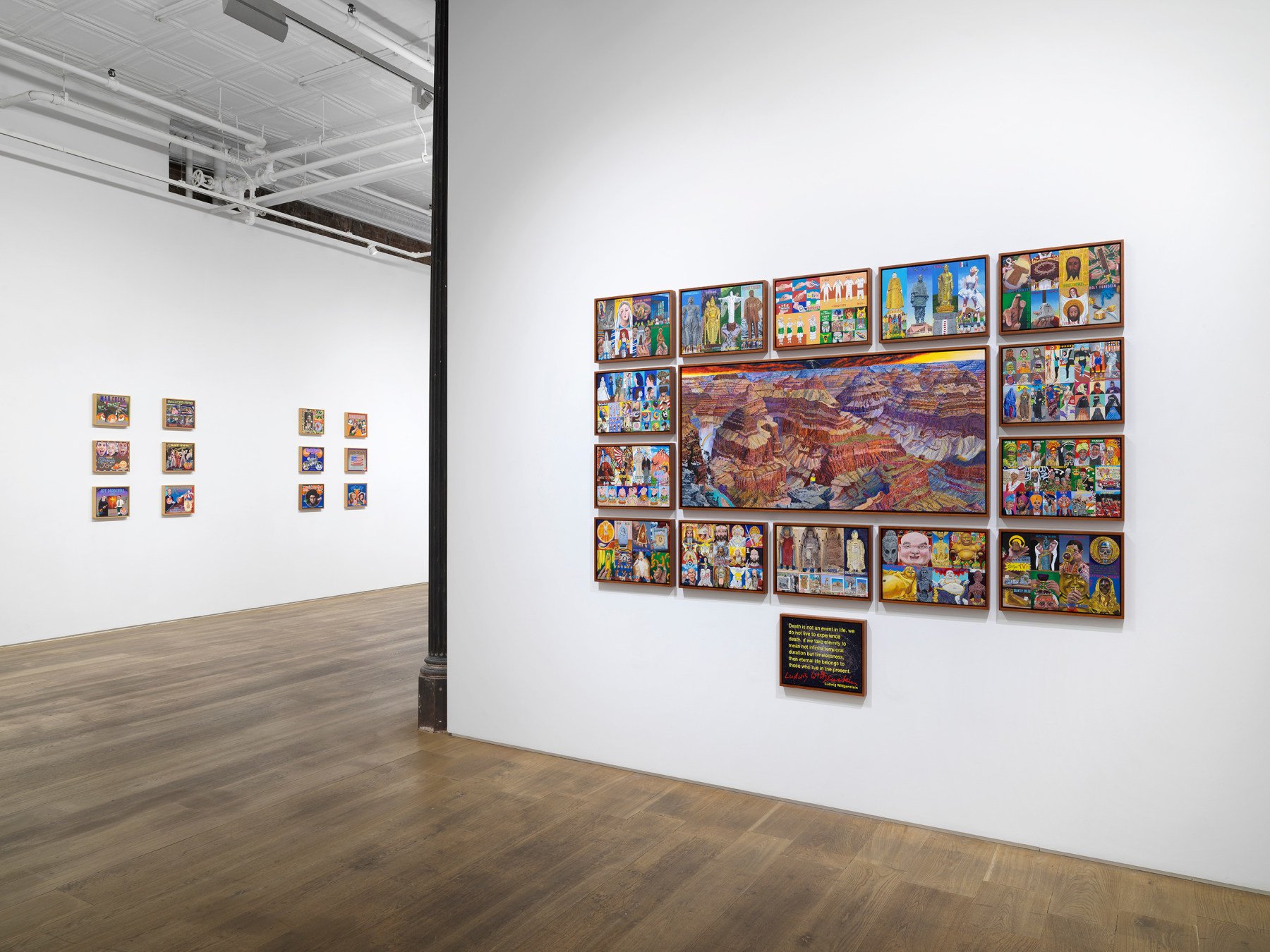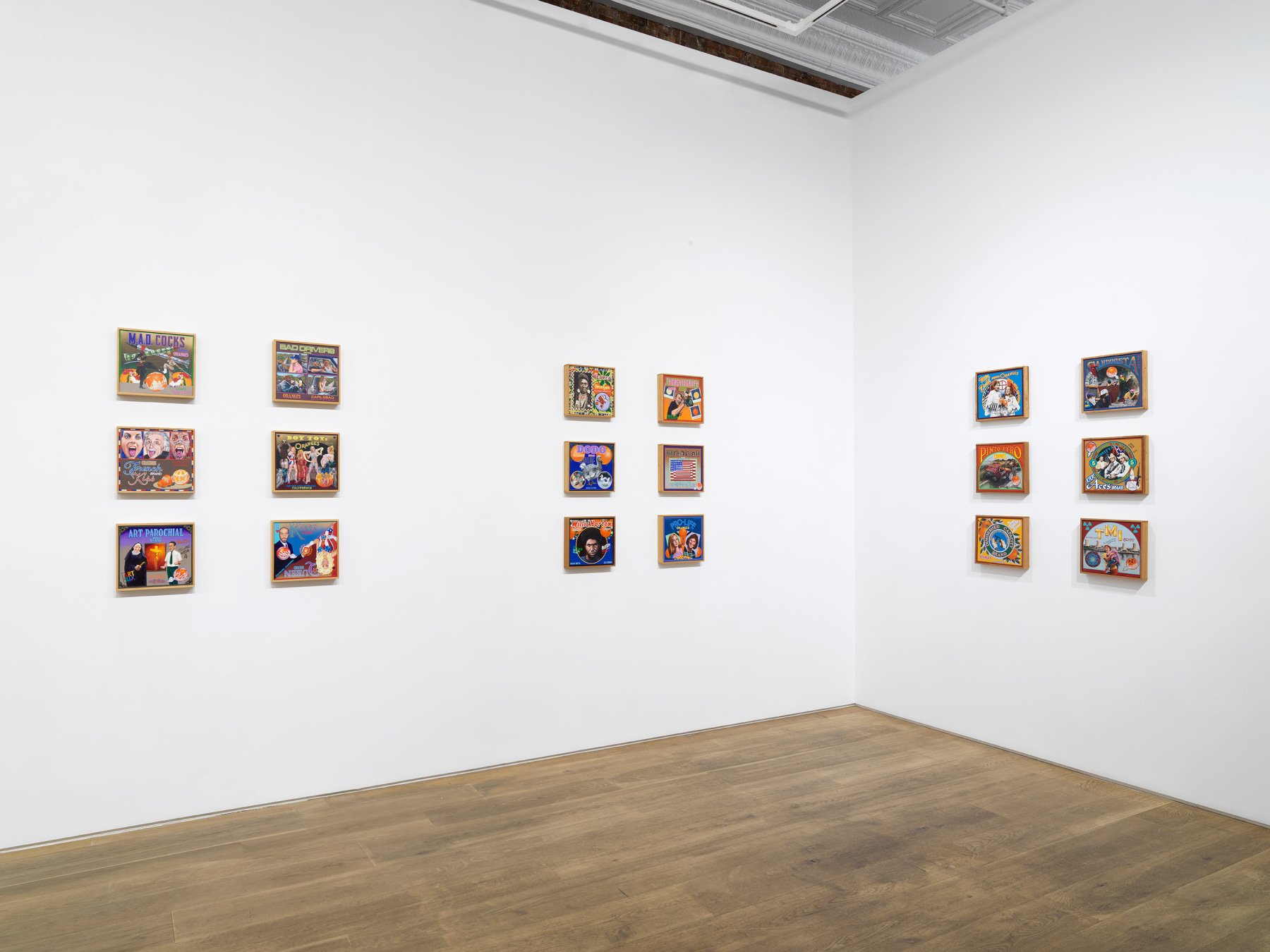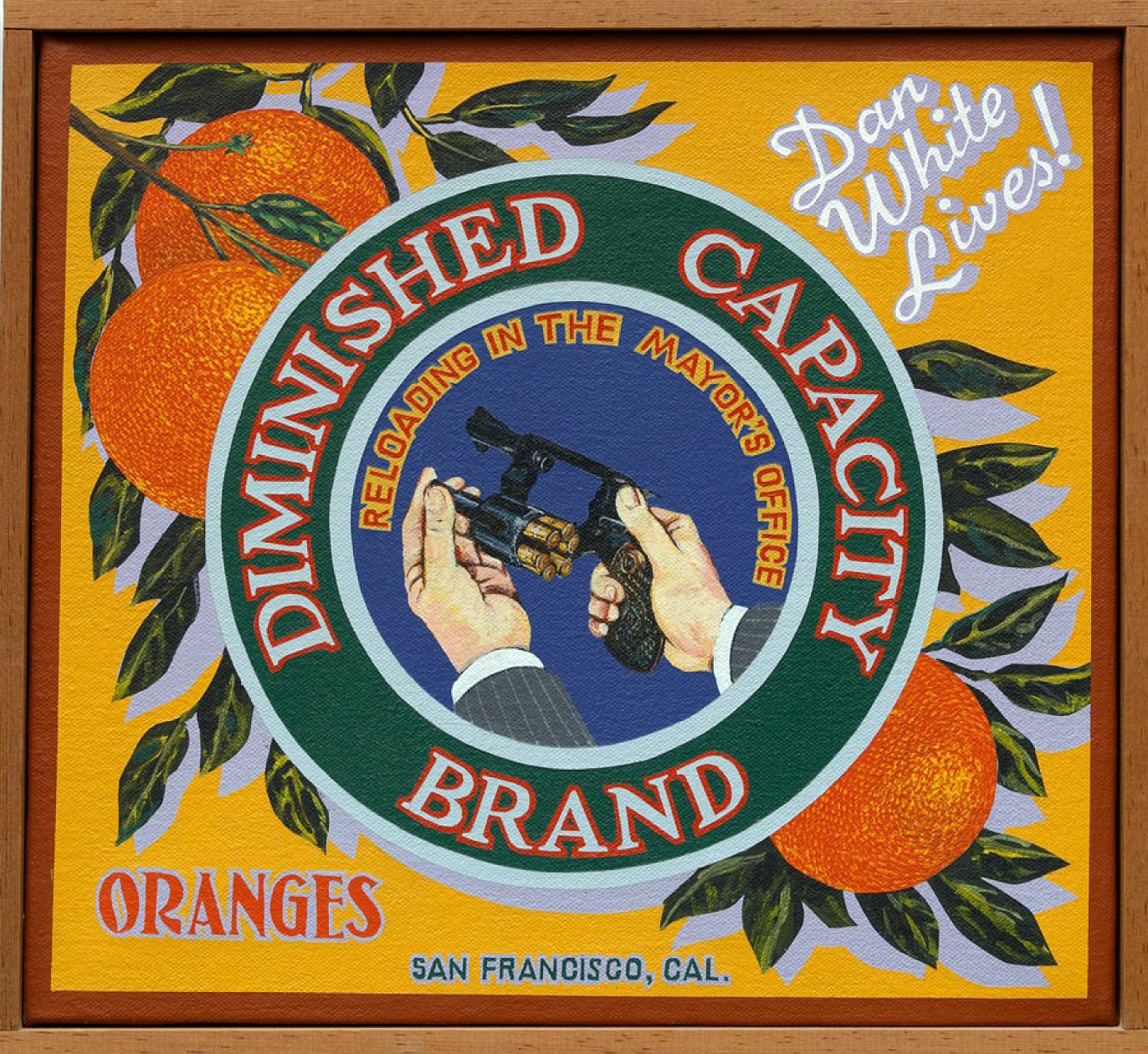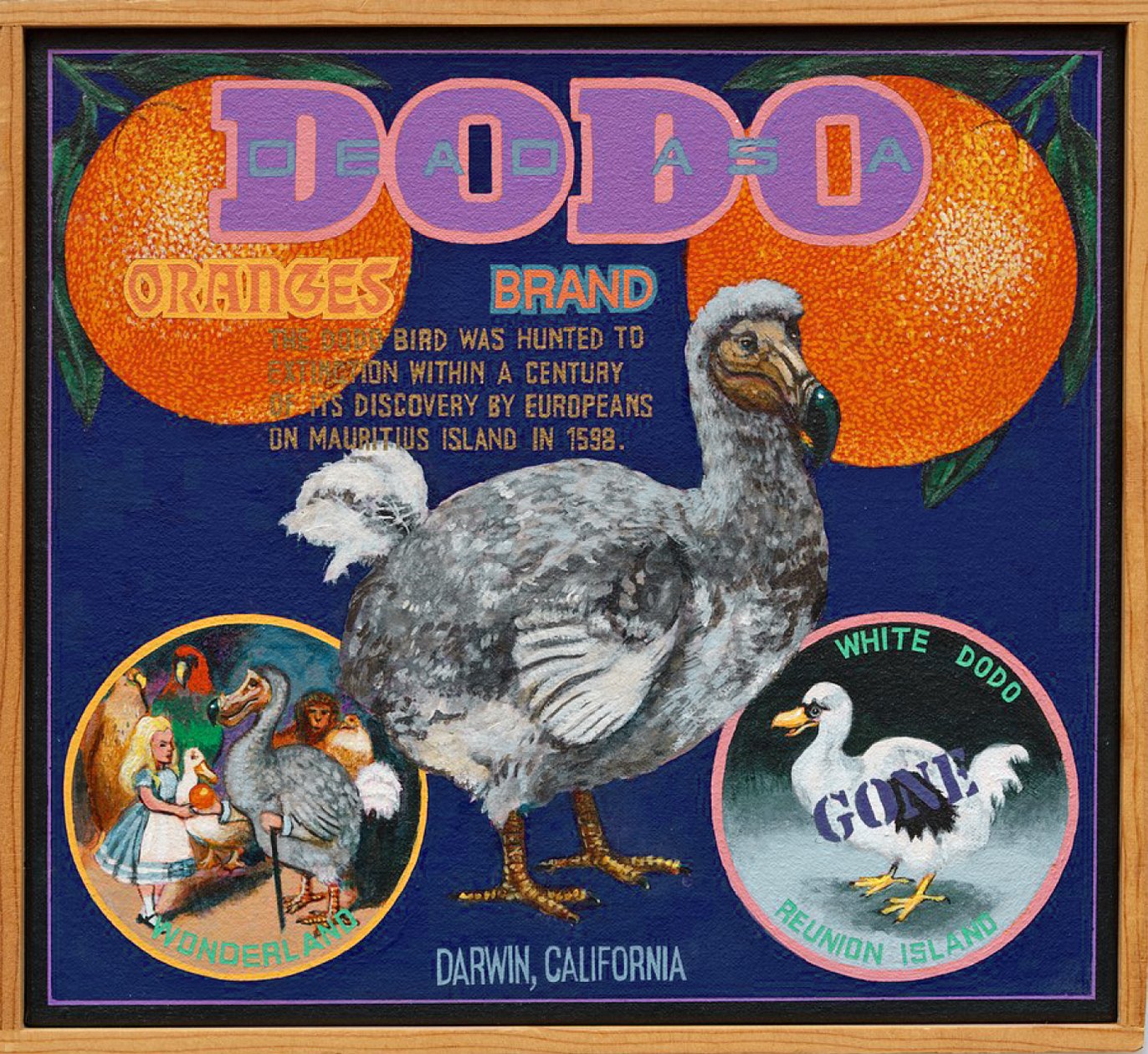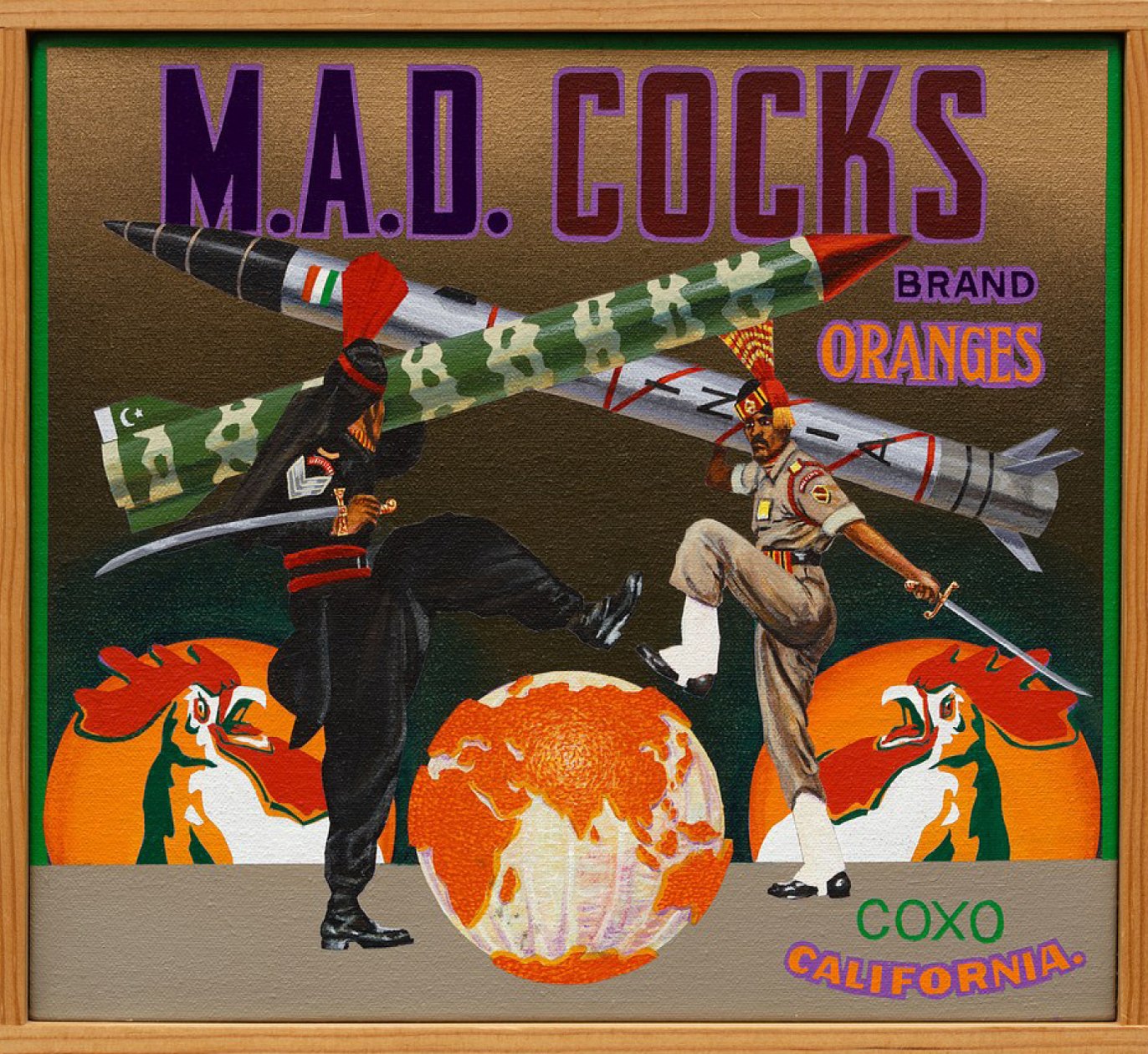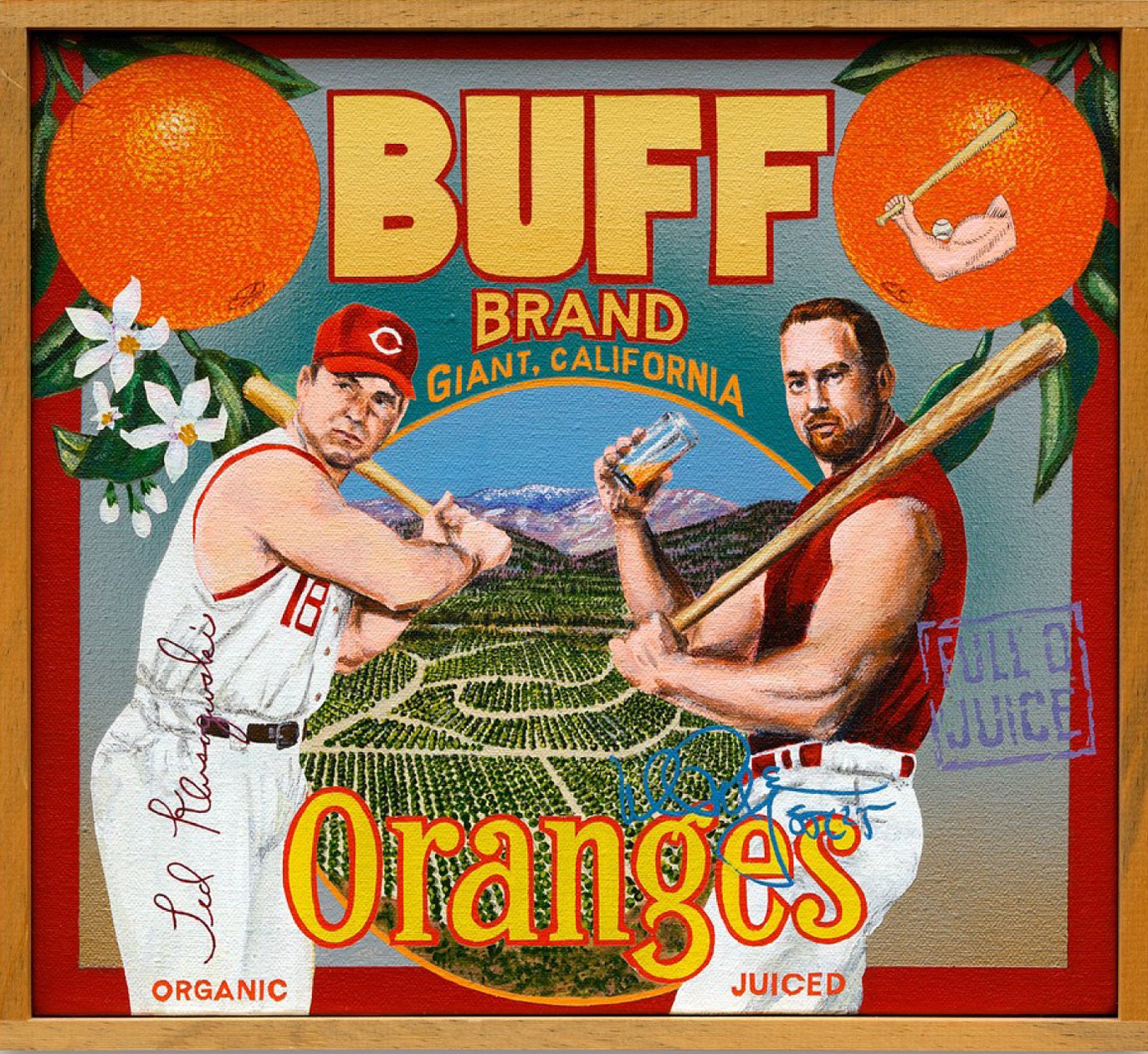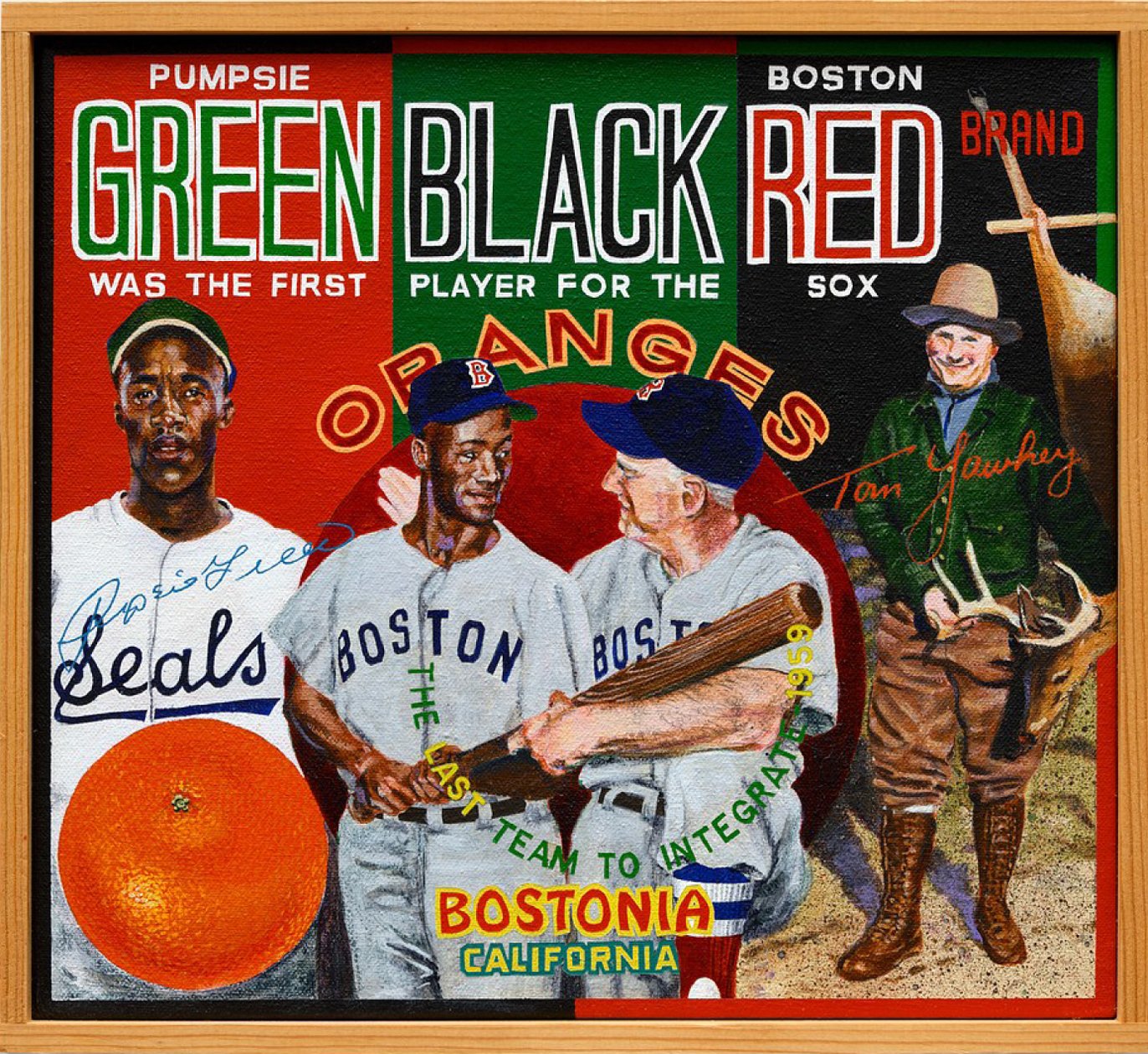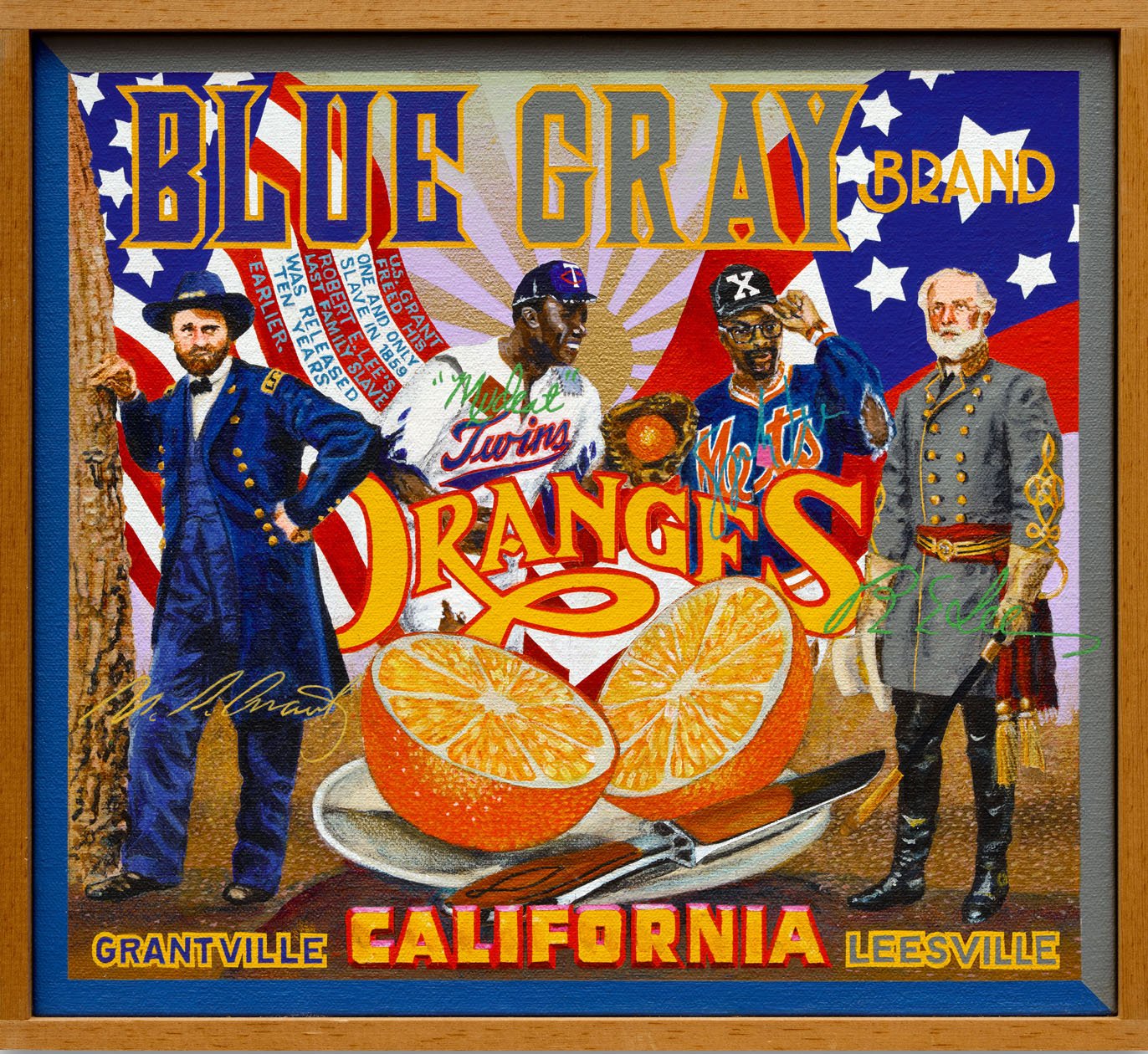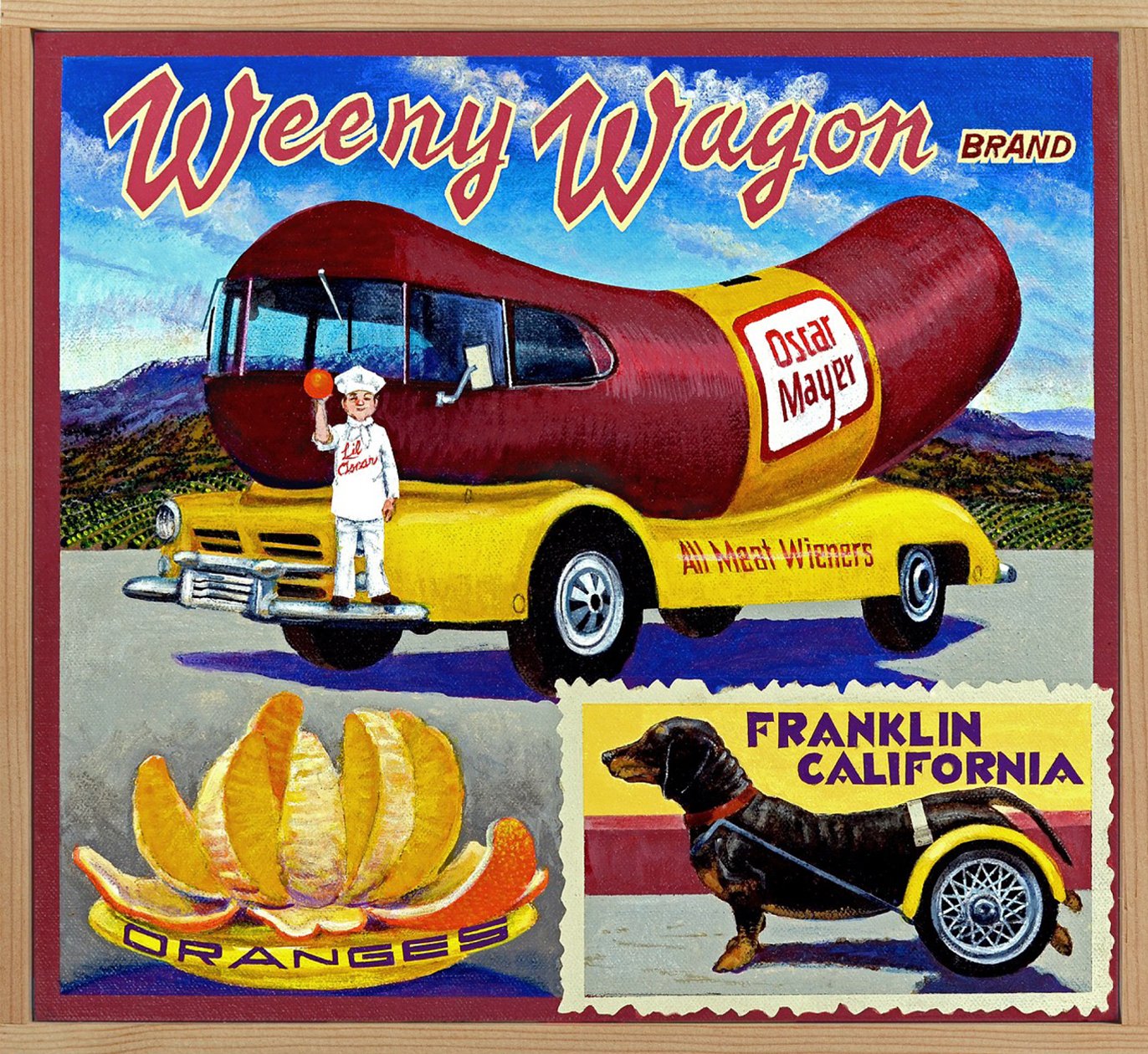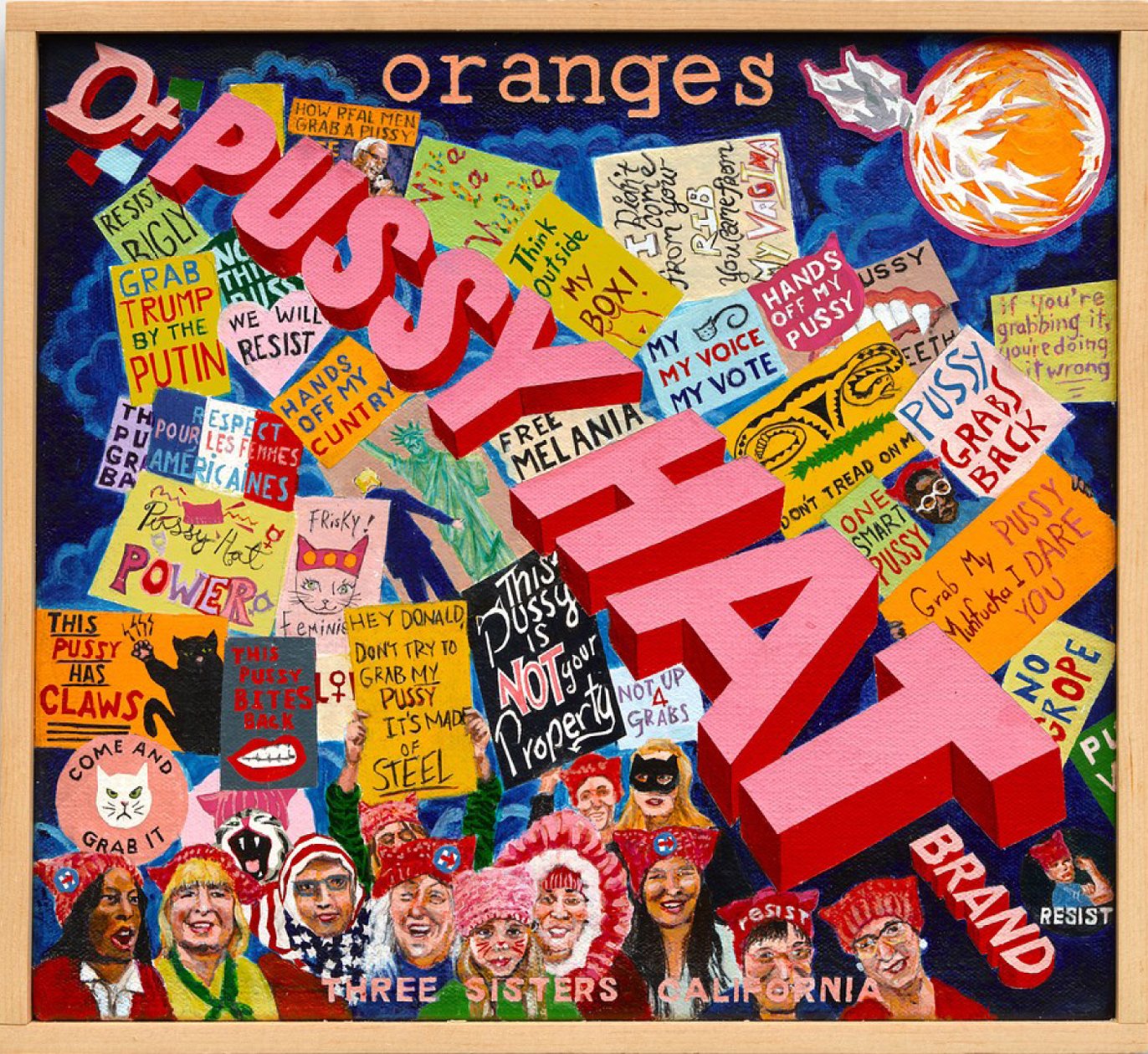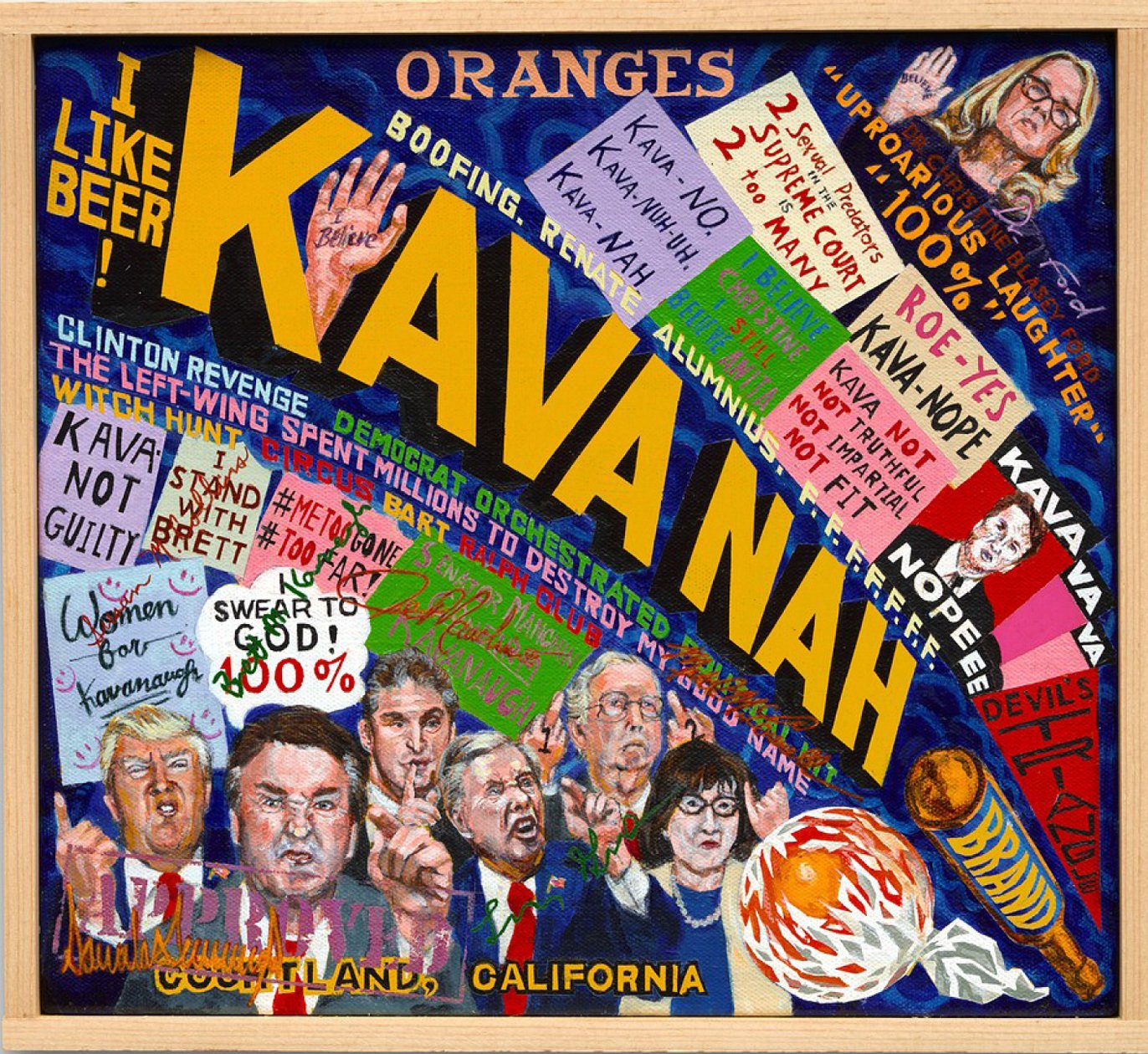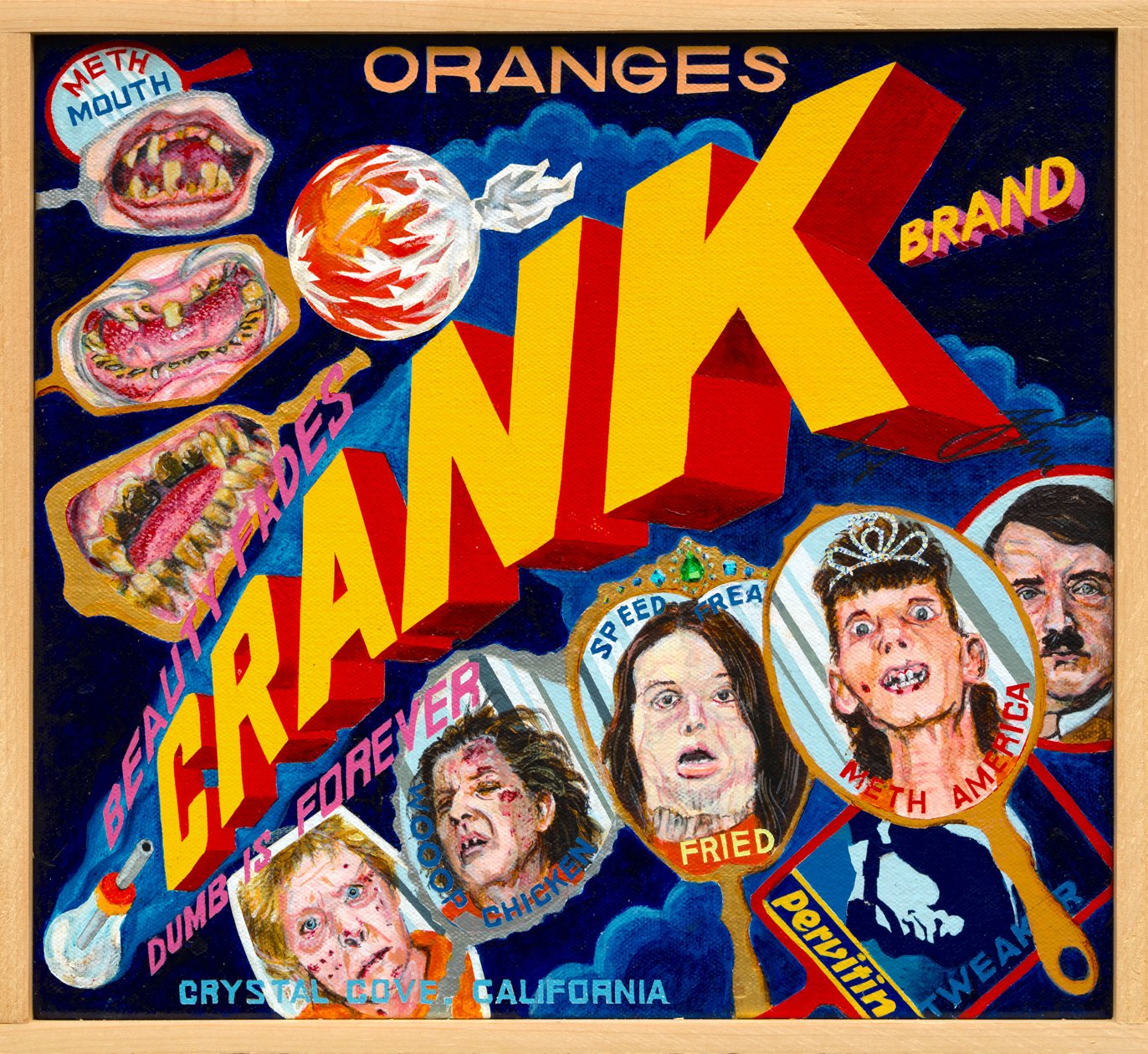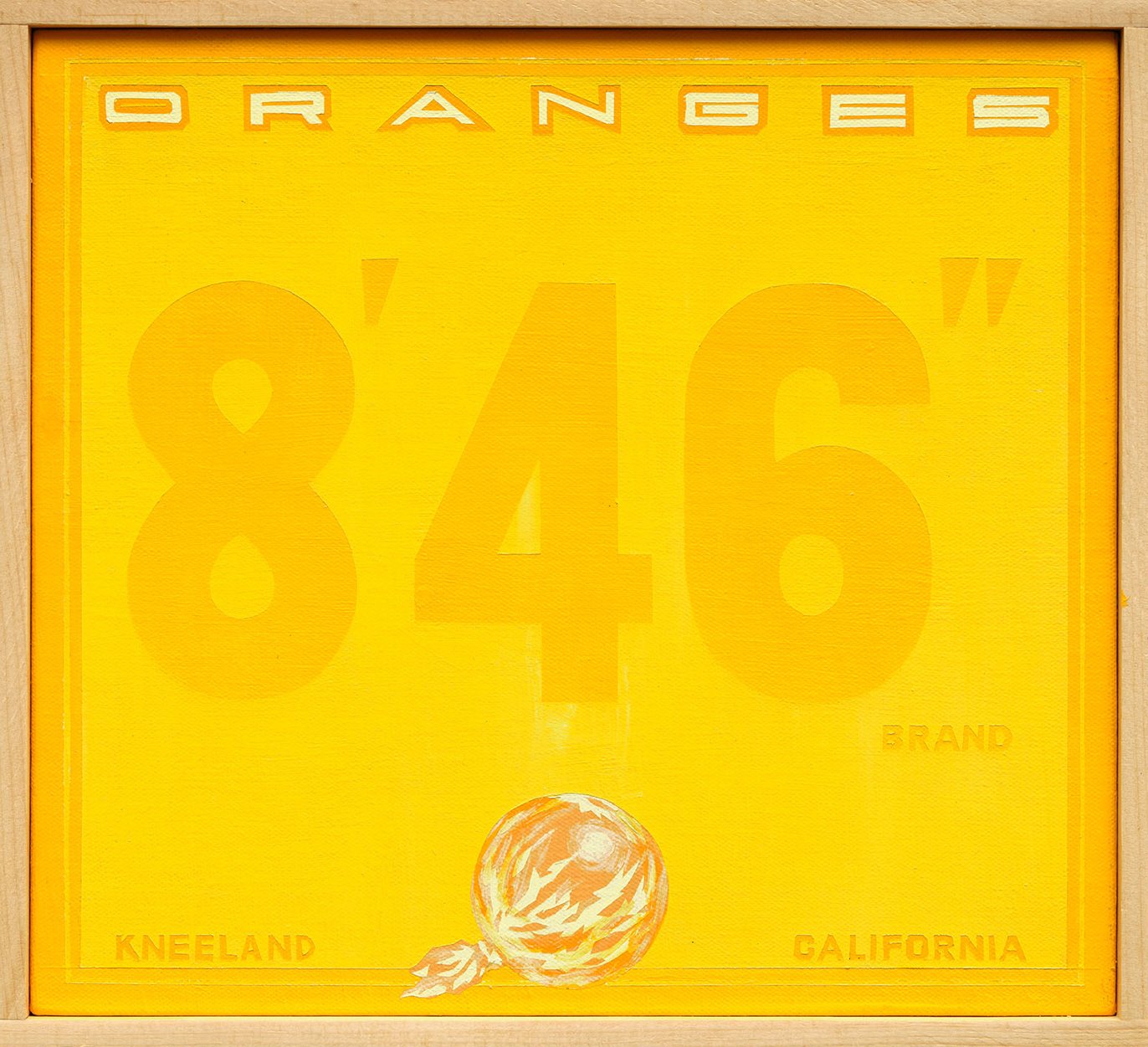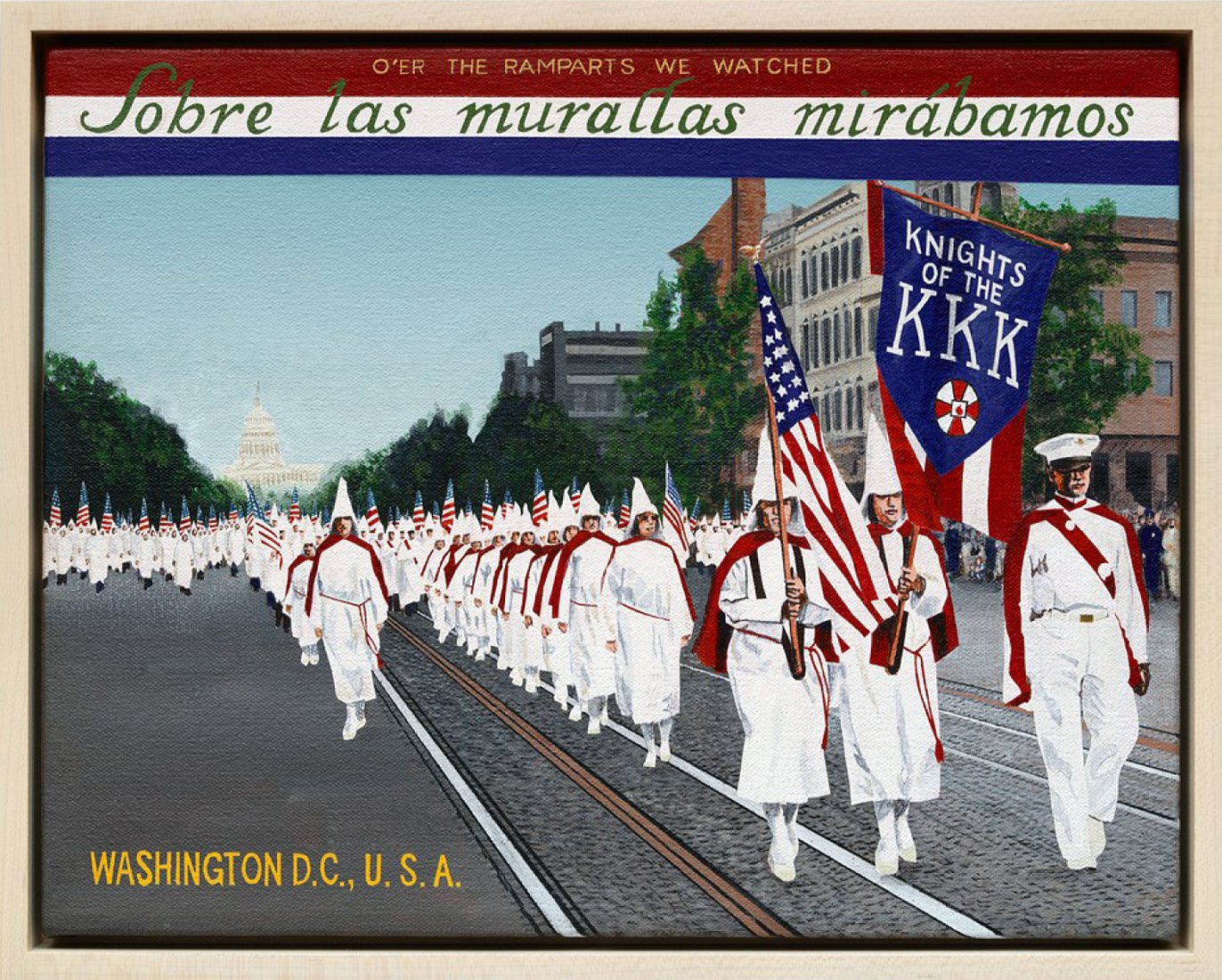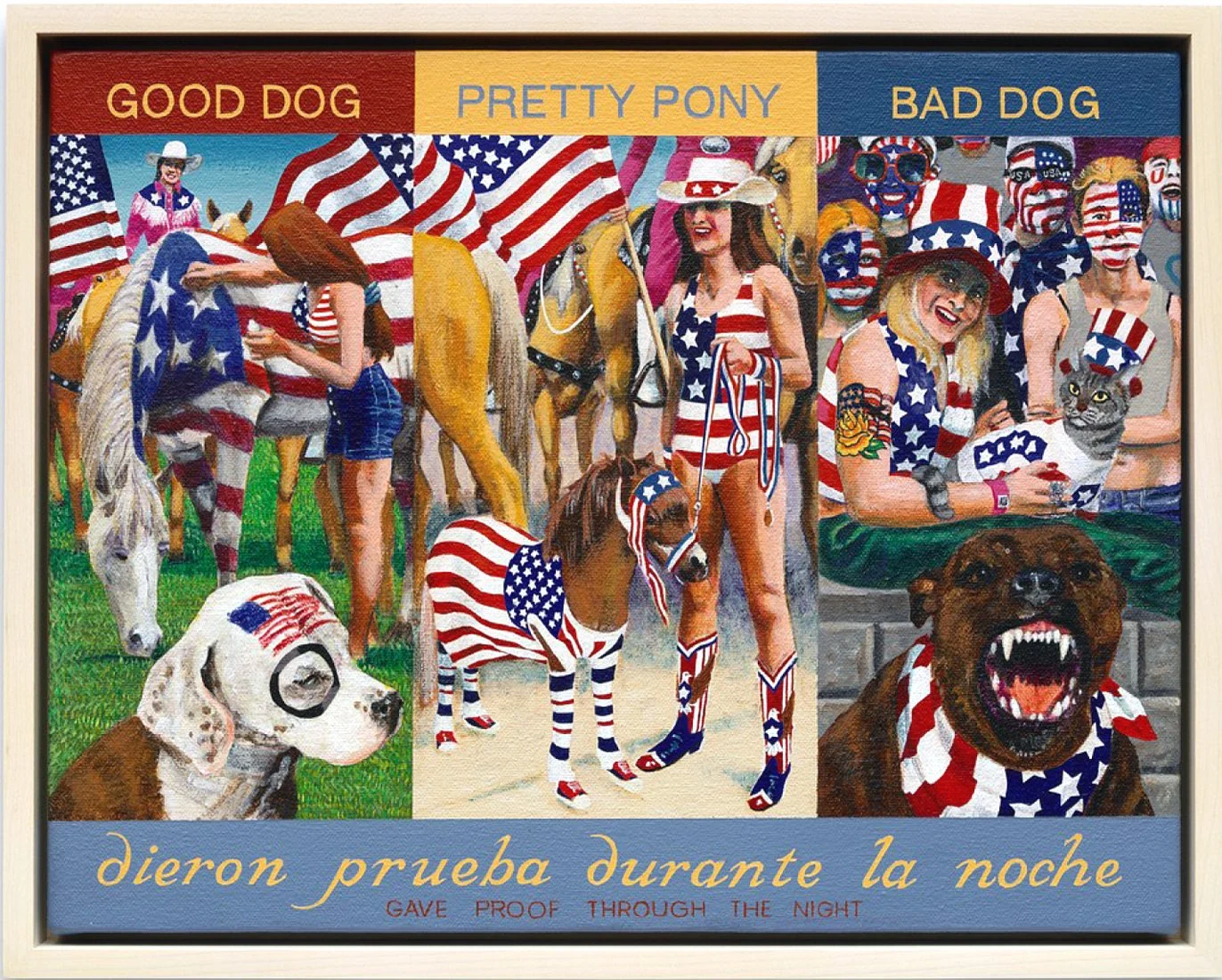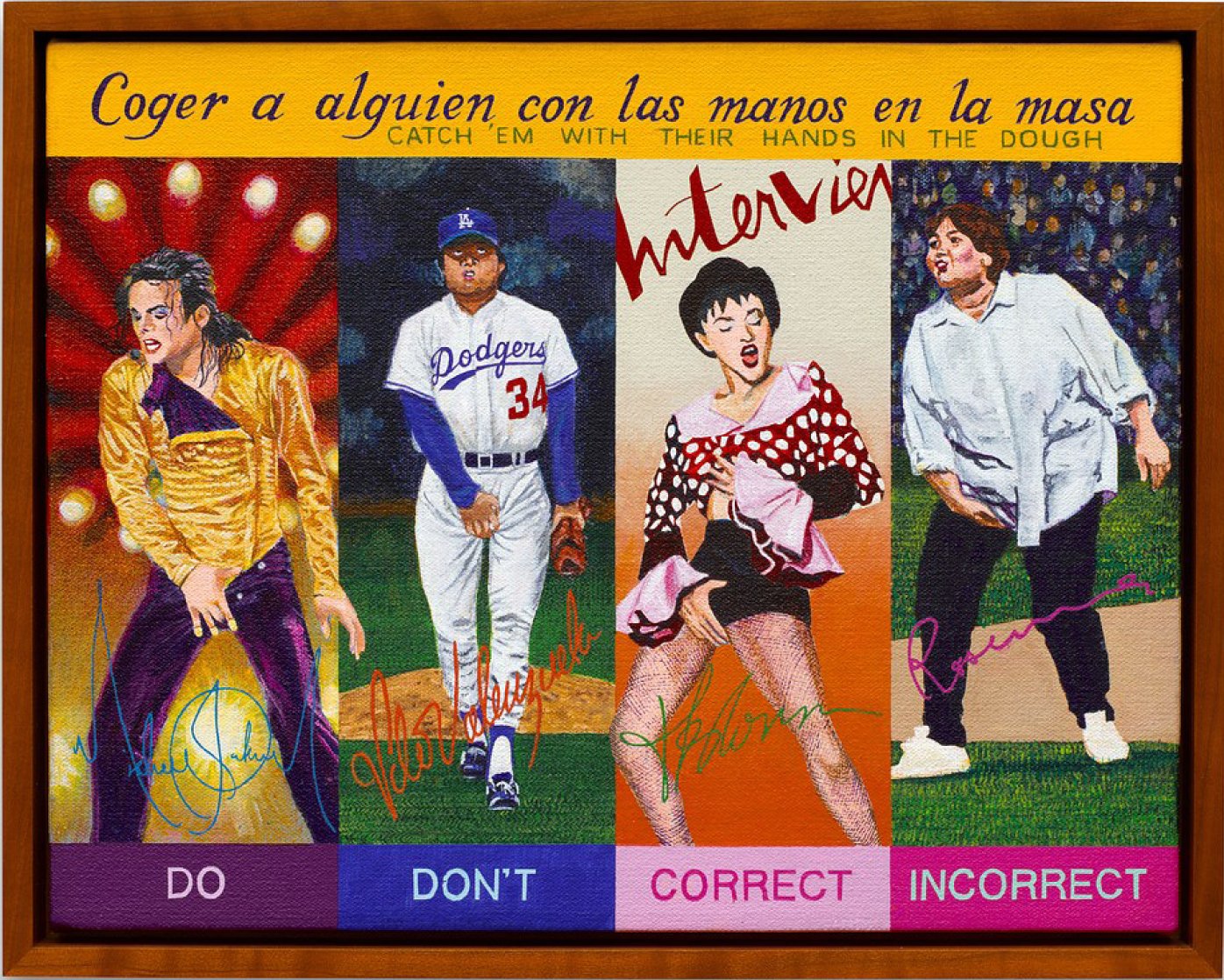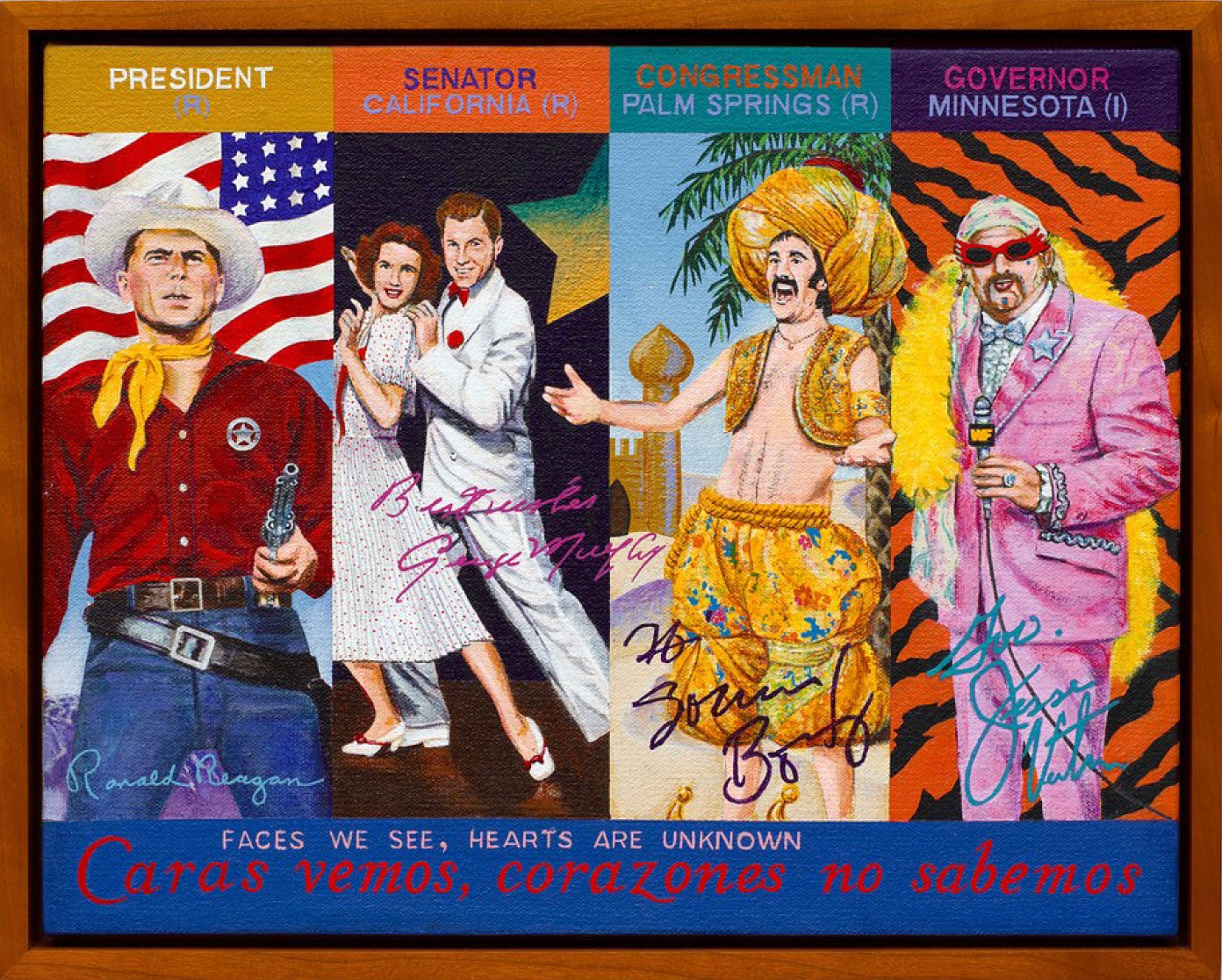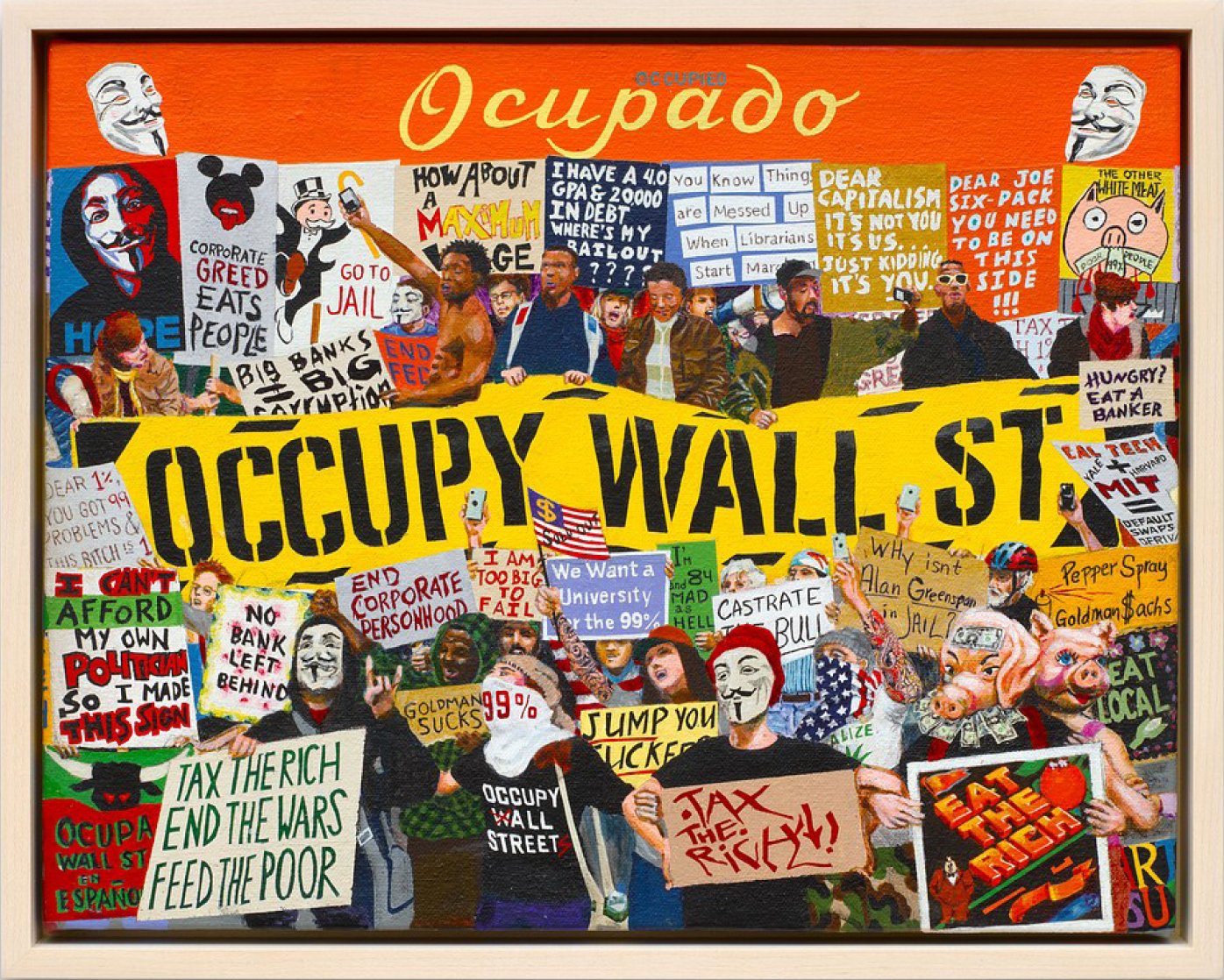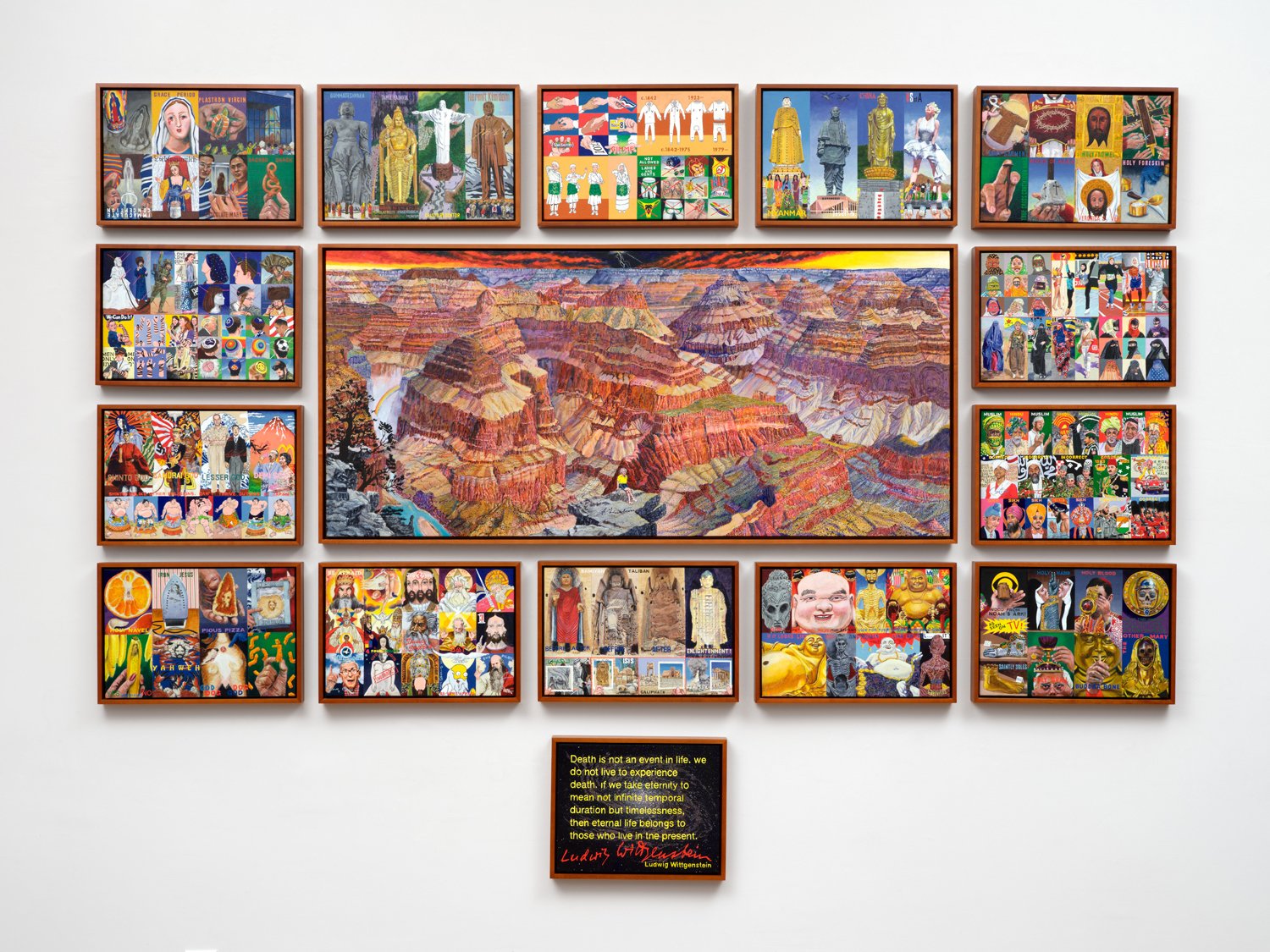at ortuzar projects, nyc
Ben Sakoguchi
BELIEF & WORDPLAY
SEPTEMBER 8 - OCTOBER 21, 2023
Ortuzar Projects is pleased to present Belief & Wordplay, the gallery’s second exhibition with Pasadena-based artist Ben Sakoguchi (b. 1938, San Bernardino).
Totaling 94 canvases painted over the last five decades, the exhibition chronicles the complex, contradictory cultural landscape of the United States. Pairing the cheery pictorial style of commercial imagery with the often disturbing truths foundational to the country’s history, Sakoguchi mirrors a particularly American visual language and logic in which politics and entertainment are impossibly intertwined, and rationality is prone to devolving into pure affect. In ambitious multi-canvas works—such as Comparative Religions 101 (2014/2019), exhibited publicly for the first time—and durational series that can encompass hundreds of individual paintings, Sakoguchi untangles the thorny issues that undergird civilized society in a combination of social commentary and satire that is at once diabolical, illuminating, humorous, and macabre.
In his longest running series, spanning nearly fifty years, Sakoguchi creates small-scale paintings based on the composition and graphic design of vintage orange crate labels, which he observed in his parents’ San Bernardino Valley grocery store. The “Orange Crate Label Paintings,” with 56 examples represented in this exhibition, all adhere to the same rubric: each includes an orange, a fictitious brand, and a real location in his home state. This classically Californian brand of conceptualism, in which image and caption are paired in idiosyncratic juxtapositions, is used by Sakoguchi to respond to the endless minutiae reported in mass media.
Two early paintings, for example, depict events in 1979: the Sandinistas’ overthrow of the US-backed Nicaraguan government, and the Greensboro Massacre, in which white supremacists and Nazis clashed with and killed protesting members of the Communist Workers Party. In retrospect, the overlap of these events on the timeline forces certain associations or patterns to emerge. While the web of events—from nuclear meltdowns to battles over abortion rights, arranged in a dense chronological grid—verges on the conspiratorial, Sakoguchi is keenly aware of the violent possibilities of ideology. Forcibly relocated and imprisoned in a Japanese internment camp during World War II, the artist is familiar with the hypocrisy and historical amnesia that accompanies shifts in social consciousness.
ORANGE CRATE LABEL SERIES 1975-81
ORANGE CRATE LABEL SERIES 1995
ORANGE CRATE LABEL SERIES 2001-03
While his attentive documentation of historical events acts as a record made in real time, Sakoguchi also attends to more minor histories, whether it be the culture wars, waged simultaneously with the ballooning of the commercial art market; the history of baseball, or trends within popular music.
ORANGE CRATE LABEL SERIES: THE UNAUTHORIZED HISTORY OF BASEBALL 2005-08
ORANGE CRATE LABEL SERIES: CARS/PLANES/DOGS 2011
In recent works the historic is often superseded by the viral, and his brands take on monikers from the near history of the Trump years, such as “Pussy Hat,” “Tiki Torch,” or “Pizzagate.”
ORANGE CRATE LABEL SERIES: WORDS 2016-18
In a group of six “Quarantine Paintings” from 2020, rendered with a rare sparseness and sensitivity, Sakoguchi commemorates the Black Lives Matter movement and the lives of Breonna Taylor, Ahmaud Arbery, and George Floyd.
ORANGE CRATE LABEL SERIES: QUARANTINE PAINTINGS 2020
As a decades-spanning project, Sakoguchi’s “Orange Crate Label” paintings index the American news cycle, chronicling current events from the moment of their occurrence to their aftershock and eventual historicization
ORANGE CRATE LABEL SERIES: QUARANTINE PAINTINGS 2020-21
In a parallel project, begun in the wake of the US invasion of Iraq, Sakoguchi evokes Francisco Goya’s Los caprichos (1797–1798). One group of twelve paintings, collectively titled “Star Spangled Banner” (2003–2004), presents the American flag as a divisive symbol of both liberty and injustice. Phrases from the national anthem, written in Spanish and English, are paired with brightly colored captions that cast their subjects in stark binaries, such as “incorrect/correct,” “do/don’t,” “bad/good,” “us/them.”
CAPRICES: STAR-SPANGLED BANNER 2003-04
Drawing out the absurdity that results from our country’s political polarization, the format was continued in the 2010s with the “Signs” series, which matter-offactly places signage wielded at opposing protests side by side. Instead of positioning one party or group over another, Sakoguchi acerbically critiques the universal follies and foolishness of contemporary American society.
CAPRICES: SIGNS 2012 / CAPRICES 2003-04 / CAPRICES: SIGNS 2012
The exhibition concludes with the sixteen-painting work Comparative Religions 101 (2014/2019). The center panel of the installation features a diminutive Albert Einstein sitting on the edge of the Grand Canyon. The scientist’s presence in the sublime landscape exemplifies the human desire to make sense of the vastness of the universe through religion, science, and philosophy. In addition to paintings that depict various spiritual figures, garments, statues, and relics, Sakoguchi extends the definition of religion to include the idol worship of celebrities and political figures. In doing so, he alludes to the human tendency to organize around a greater power, whether that be a religious or philosophical doctrine, fervent nationalism, or a Cheeto in the shape of Jesus Christ. Underneath the grid of paintings is a quote by Ludwig Wittgenstein, which perhaps offers a key into Sakoguchi’s ambiguous and nuanced position. It reads: “If we take eternity to mean not infinite temporal duration but timelessness, then eternal life belongs to those who live in the present.” In surveying but a glimpse of Sakoguchi’s persistent practice, the long present appears to extend endlessly in all directions.
COMPARATIVE RELIGIONS 101 2014/2019
Installation Photos: Dario Lasagni - Photos of individual works: Paul Salveson





